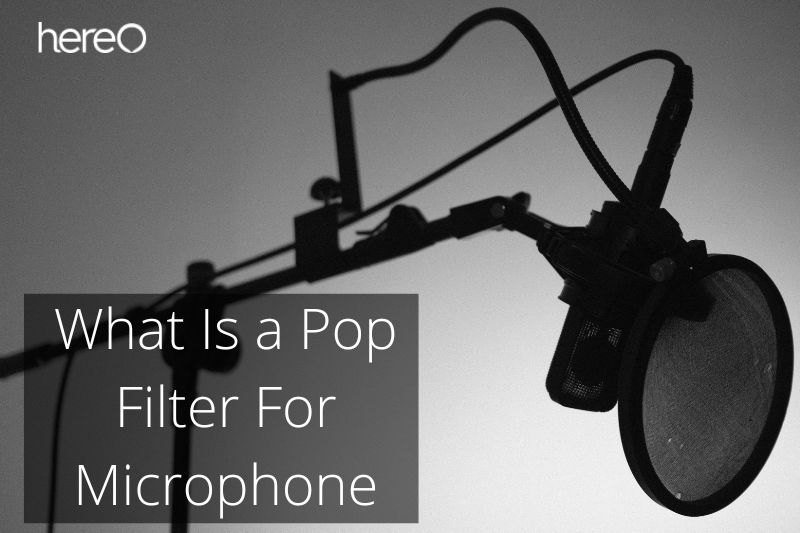Most of the YouTube videos you watch probably have them, especially those that belong to singers and musicians who do their own home recordings. It’s that thing in between the vocalist and the microphone – the pop filter. So, what is a pop filter for microphone.
Contents
- 1 Why Do Popping Sounds Occur
- 2 What is a Pop Filter
- 3 How Does a Pop Filter Works
- 4 Built-in vs External Pop Filters
- 5 Advantages of Pop Filters
- 6 How To Effectively Position A Pop Filter
- 7 What to Consider Buying a Pop Filter
- 8 Alternative To A Pop Filter
- 9 FAQs about What Is a Pop Filter For Microphone
- 10 Conclusion
Why Do Popping Sounds Occur
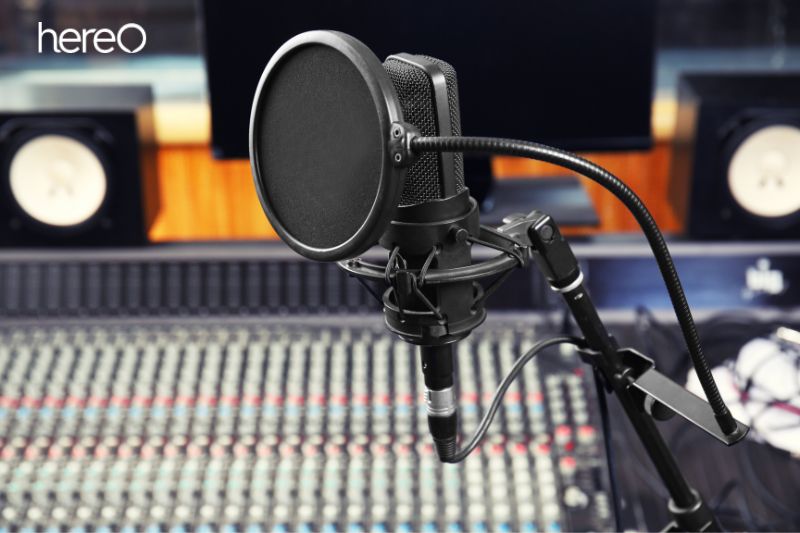
Plosive sounds are often those heard on letters like P and B, and they are spoken organically. These noises would cause the flame to flicker if a lit candle were being held in front of your lips as you spoke.
If you have your mouth too close to the microphone when recording, popping sounds may be amplified. An output signal is created as a result of the plosive sounds’ interaction with the microphone’s diaphragm.
With the intention of completely eradicating them from the finished result, a pop shield or filter acts as a barrier between these sounds and the microphone.
What Are Plosives
Always, while discussing microphone plosives, human speech is brought up. Because plosives are a natural element of human speech, this is. Plosive sounds are produced by completely obstructing the airflow as it leaves the lips, which is followed by the sound produced as the blocked air is released.
Plosives occur on the English hard consonants B, D, G, K, P, and T. As different portions of the mouth and vocal tract close and open, the mouth releases the airbursts.
Through air, plosive energy dissipates quite quickly. To avoid plosives, however, putting the microphone at a safe distance is not very helpful. Poorer audio quality is frequently the result of this separation, especially when streaming in less-than-ideal (non-soundproof) settings.
What is a Pop Filter
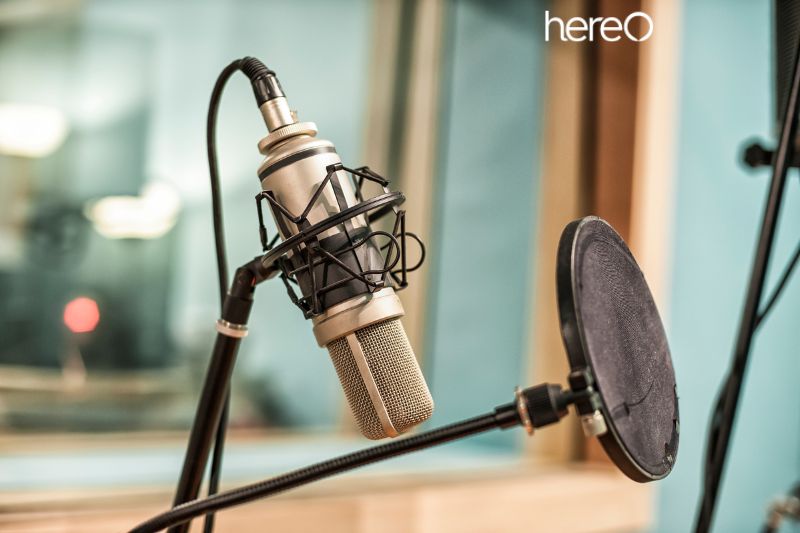
A pop filter works by dissipating transient sound energy between a sound source and mic capsule. This helps to reduce or eliminate the popping sounds associated with gusts of air from the human voice and other sources.
Pop filters are designed to attenuate the energy of the plosive, which otherwise might exceed the design input capacity of the microphone, leading to clipping.
In effect, the plosive’s discrete envelope of sound energy is intercepted and broken up by the strands of the filter material before it can impinge on, and momentarily distort, the sensitive diaphragm of the microphone.
Pop filters come in two main types: ones made with nylon stretched over a circular frame, and ones with a fine mesh metal screen. Both are effective at eliminating popping sounds. Additionally, a pop filter can protect against the accumulation of saliva on the microphone element.
Pop filters are essential for vocalists, podcasters, and anyone else who records their voice. They help to ensure that the audio quality is clear and crisp, without any popping or distortion.
How Does a Pop Filter Works
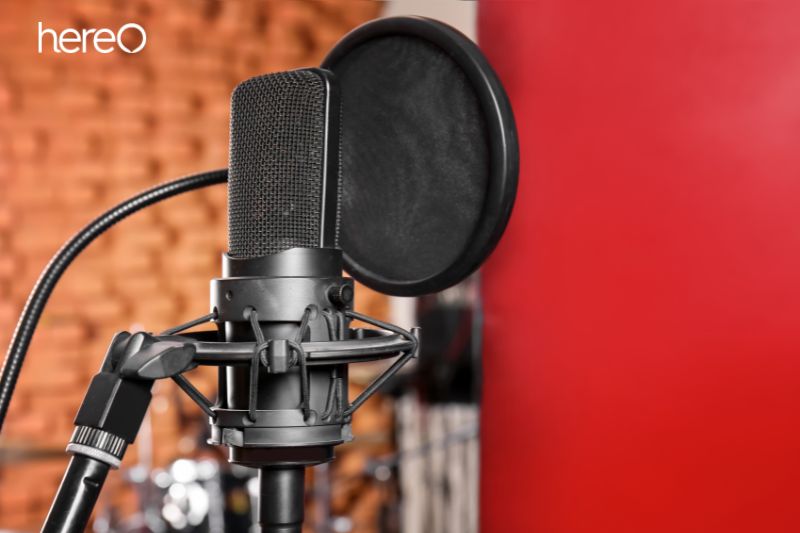
The functional portion of a pop filter is often shaped like a disc and constructed of an acoustically semi-transparent material. This frequently takes the form of braided nylon stretched around a metal circle with tiny holes in it.
In essence, this material absorbs plosive air bursts while allowing sound waves to pass through (and around).
Pop filters shield microphones from plosives by transforming airbursts into innocuous turbulences. The sound waves from a vocalist’s plosive efficiently travel through the pop filter, but the air gust is dispersed.
The pop filter must be positioned carefully. The air turbulences are still strong enough to be hazardous to a microphone diaphragm right after the pop filter.
To prevent them from “popping” the microphone capsule, we must give them enough room to completely disperse.
The microphone pop filter also serves the function of protecting it from saliva. Your microphones’ longevity may be extended by this less well-known feature. Compared to microphones, pop filters are much simpler to maintain or replace. This advantage cannot be overstated!
Built-in vs External Pop Filters

Pop filters are included into several microphones. There are several degrees of effectiveness for built-in pop filters. The distance between the capsule and the sound source has a direct bearing on this.
Long grille and pop filter are features of the SM7B. It is top-address as well. It provides plenty of space between the filter and the capsule when speaking into its top to enable efficient air displacement. HyperX Quadcast, in comparison, has 3 capsules within and a narrow shape that is side address. Plosives can still have an impact on recordings because there isn’t much space for air to move about.
Advantages of Pop Filters
- Pop filters are a great tool to use when recording audio, providing multiple benefits. Here are some of the advantages of using a pop filter:
- Pop filters help reduce the popping sound associated with gusts of air from the human voice and other sources by dissipating the transient sound energy between the sound source and mic capsule.
- Pop filters also prevent the saliva from vocalists from going into the microphone, protecting it from the corrosive salts in our saliva. This helps maintain the integrity of the microphone and prevents it from smelling bad and falling apart.
- It is simpler to take out undesirable noises and frequencies when using a pop filter since it eliminates problems on both the high and low ends.
- They eliminate the popping sounds caused by the mechanical impact of fast moving air on the microphone.
How To Effectively Position A Pop Filter
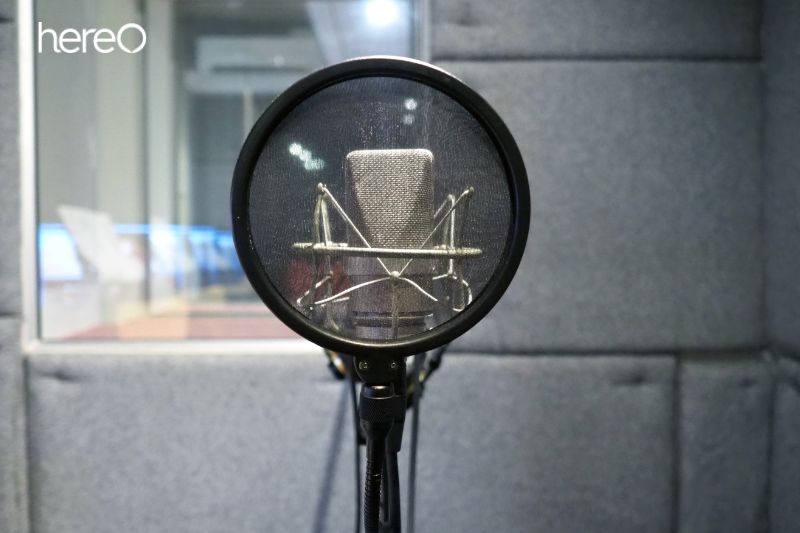
The amount of energy you will put into the recording will determine how far you set your pop filter. The pops will be less noticeable the farther the pop filter is from the microphone.
However, distance necessitates boosting your microphone gain. Room noise increases as gain increases.
So, if you’re singing in a louder, tougher style, the pop filter should be placed roughly a palm’s width away from the microphone. You can set the pop filter 2 to 3 fingers away from the pop filter if you’re recording gentle, intimate singing.
The pop filter must be positioned so that the front of the microphone capsule is obscured from the performer’s mouth. Between the performer’s mouth and the microphone diaphragm, the pop filter is supposed to catch all plosives.
Where the performers should stand depends on the type of voice work being performed as well as the individual. The pop filter should work as long as it is placed properly in front of the performer’s mouth and the microphone capsule.
What to Consider Buying a Pop Filter
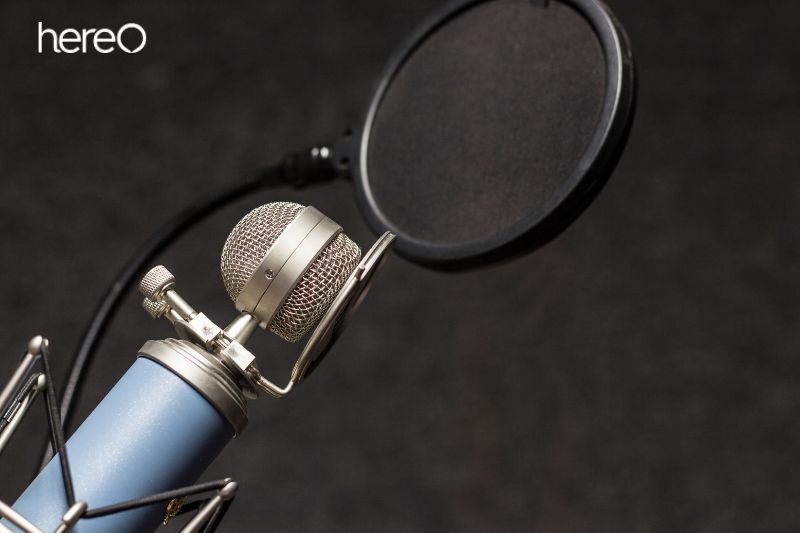
Size
The size is determined on the size of your microphone. You should choose a diameter that is appropriate for your microphone and recording style. For instance, a pop filter with a wider diameter may be better for you if you move about a lot when recording.
Shape
On the market, there are numerous shapes. Flat filets are more affordable but call for speaking more directly into the middle. Conversely, because they function from any angle, curved filters provide you greater flexibility and room to move while you’re recording.
Mounts
Another crucial factor to think about is the mount that the filter comes with. A gooseneck mount that screws into the filter frame and clamp is typically included with pop filters. Making sure the gooseneck neck is long enough will allow you to properly install the filter in front of the microphone.
Alternative To A Pop Filter
Windscreen
Pop filters are far more efficient at removing vocal plosives than windscreens. Windscreen do, however, offer a certain amount of protection from wind and other noises.
Mic Positioning
A microphone’s diaphragm is less likely to be overloaded by plosive energy when it is slightly off-axis, which lessens the influence of plosives on it.
The likelihood of plosive pops in the microphone will be greatly decreased by keeping the microphone away from the streamer’s mouth. The streamer’s visibility may be enhanced by the additional distance. The audio quality will noticeably deteriorate though.
Omnidirectional Microphones
Due of its resistance to vocal plosives, omnidirectional microphones are a good option, especially when used with lavalier mics.
However, omni microphones also catch up all other ambient noises without regard for direction. So if you select an omni mic, use your best judgment. An omnidirectional microphone is more likely to degrade your audio quality than improve it in loud environments.
FAQs about What Is a Pop Filter For Microphone
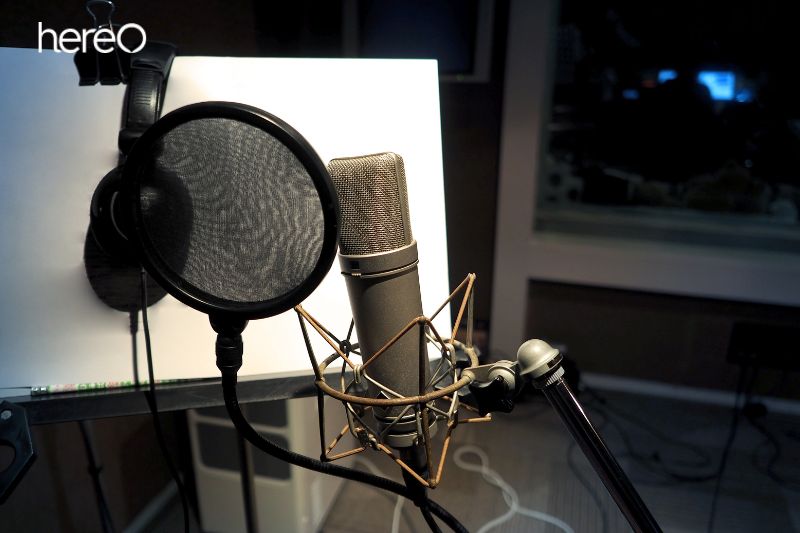
Do you need a pop filter for a condenser mic?
In order to produce sound of the finest quality, studios must outfit their condenser microphones with pop filters.
What’s better, pop filter vs foam cover?
It really depends on your needs and preferences. A pop filter is designed to reduce plosives (hard consonants like “p” and “b”) and can also help to reduce sibilance (“s” and “sh” sounds). A foam cover is typically used to reduce background noise and echo, as well as protect your microphone from dust or other debris.
Is a microphone pop filter worth it?
Yes, a pop filter eliminates problems on both the high and low ends, making editing the recording simpler and, ultimately, resulting in better-sounding auditions, demos, and finished work.
Does a pop filter make your voice sound better?
While a pop filter isn’t always necessary for producing high-quality audio, it may undoubtedly assist to decrease background noise and give your voice a polished, businesslike sound.
Is a pop filter required?
When recording vocals, a pop filter is not always necessary. However, it is a very inexpensive piece of recording gear that will eliminate undesired popping noises.
Conclusion
A pop filter is a must-have accessory for any vocalist or musician who wants to do their own home recordings. It helps to prevent loud pops and noises from entering the microphone, resulting in better sound quality for your recordings.
Whether you are a beginner or an experienced singer or musician, investing in a pop filter can make a big difference to your audio recordings. Get started today and take your recordings to the next level!
Thank you for reading. HereOfamily hope you enjoy reading.
